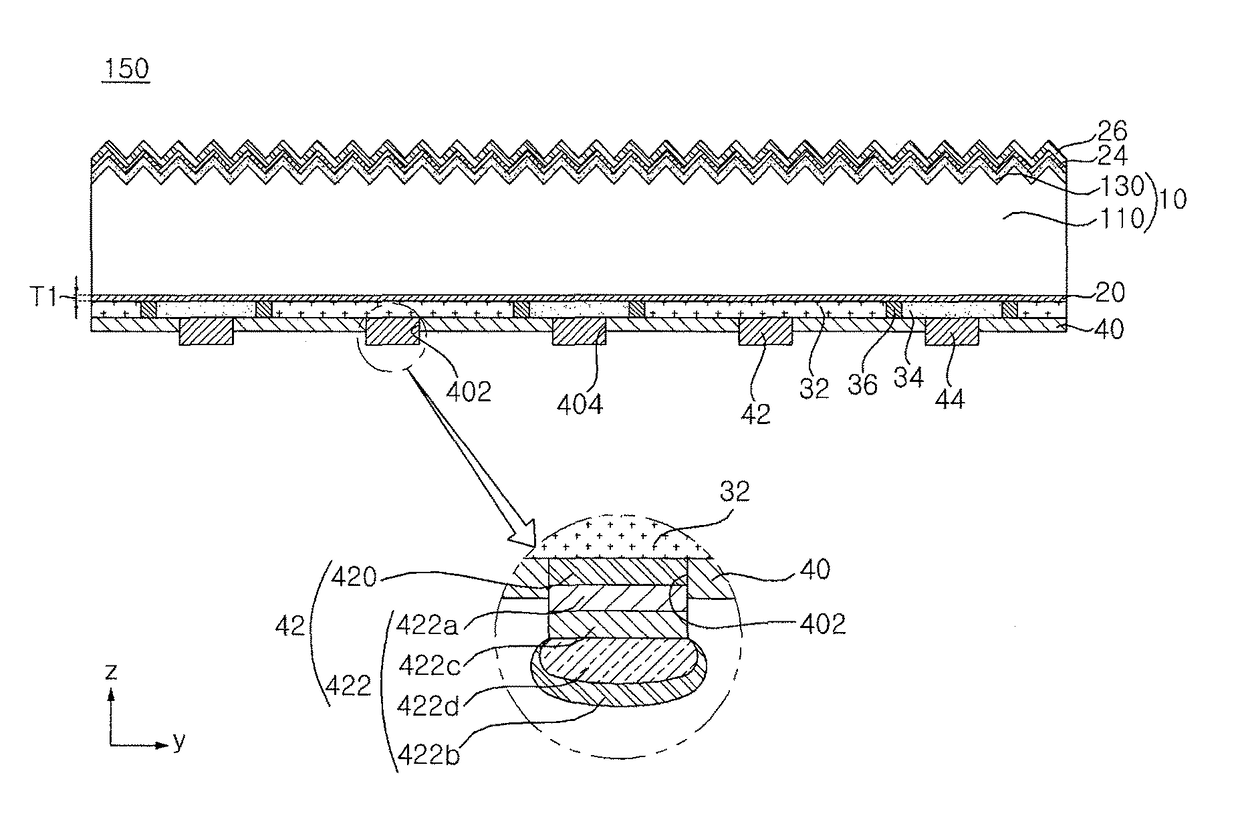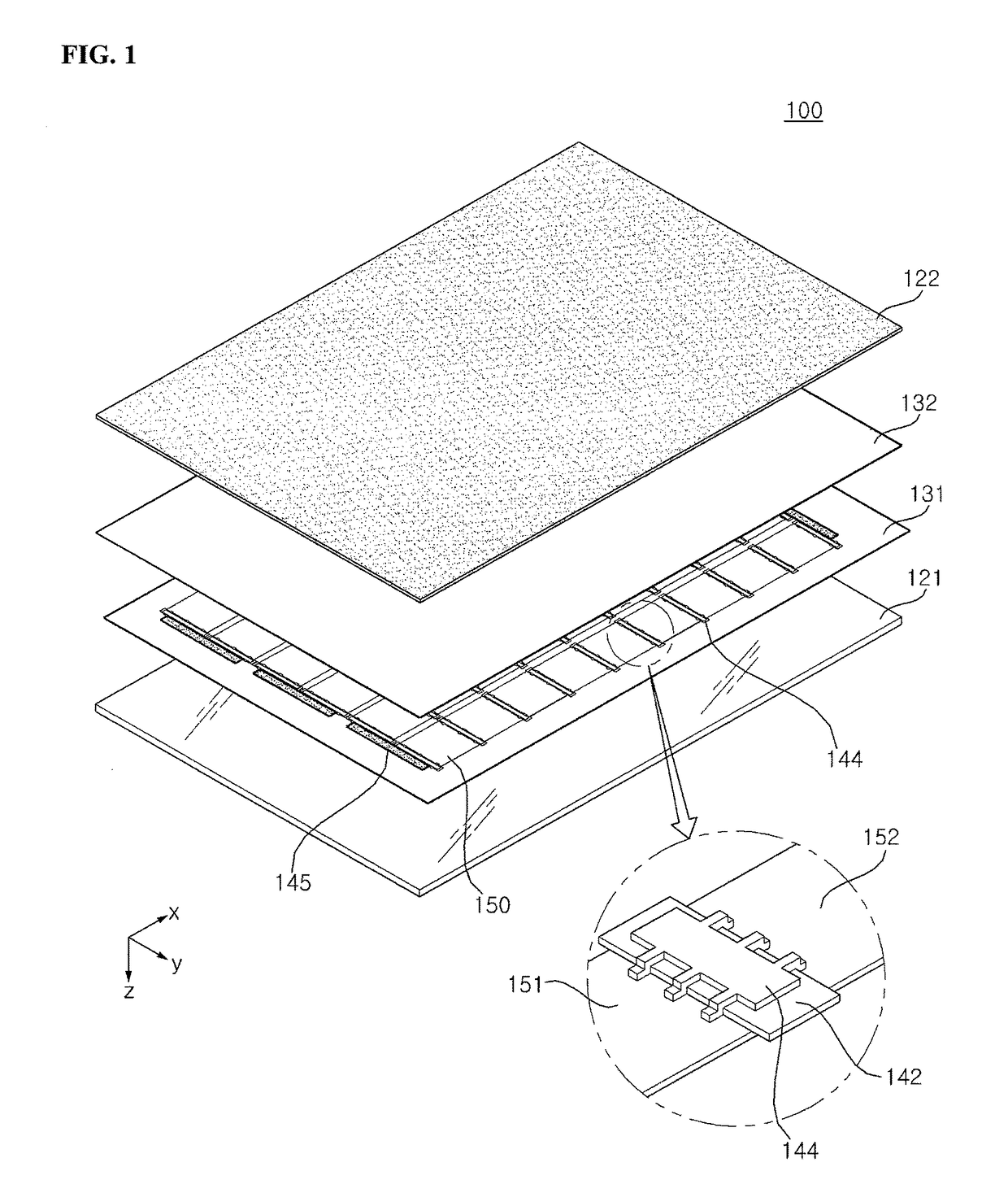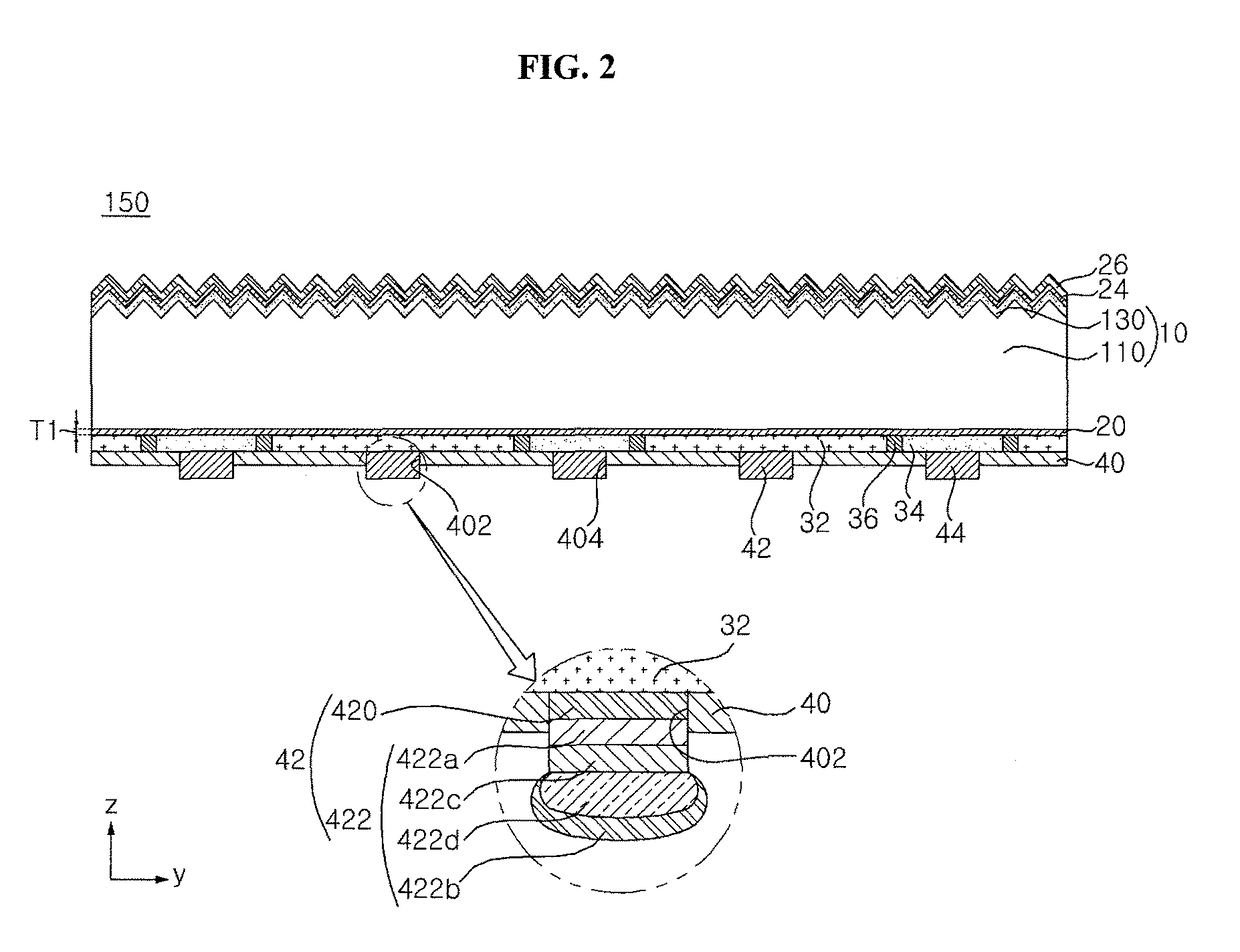Solar cell
a solar cell and cell technology, applied in the field of solar cells, can solve the problems of low efficiency of solar cells, and achieve the effects of improving light reflection, excellent conductivity, and excellent characteristics
- Summary
- Abstract
- Description
- Claims
- Application Information
AI Technical Summary
Benefits of technology
Problems solved by technology
Method used
Image
Examples
example 1
[0138]A semiconductor substrate including a base region of an n-type was prepared. A first region of a back surface of the semiconductor substrate was doped with boron (B) by ion implantation to form an emitter region, and a second region of the back surface of the semiconductor substrate was doped with phosphorus (P) by ion implantation to form a back surface field region.
[0139]An anti-reflective film was formed on a front surface of the semiconductor substrate, and a back surface passivation film was formed on the back surface of the semiconductor substrate. Subsequently, a titanium (Ti) layer (an adhesive layer) having a thickness of 5 nm and a copper (Cu) layer (a first electrode layer) having a thickness of 200 nm were sequentially formed on the back surface passivation film by sputtering and then patterned, thereby forming a first electrode electrically connected to the emitter region and a second electrode electrically connected to the back surface field region. In addition, ...
example 2
[0141]A solar cell was manufactured in the same manner as in Example 1, except that the thickness of the Ti layer was 10 nm.
example 3
[0142]A solar cell was manufactured in the same manner as in Example 1, except that the thickness of the Ti layer was 30 nm.
PUM
 Login to View More
Login to View More Abstract
Description
Claims
Application Information
 Login to View More
Login to View More - R&D
- Intellectual Property
- Life Sciences
- Materials
- Tech Scout
- Unparalleled Data Quality
- Higher Quality Content
- 60% Fewer Hallucinations
Browse by: Latest US Patents, China's latest patents, Technical Efficacy Thesaurus, Application Domain, Technology Topic, Popular Technical Reports.
© 2025 PatSnap. All rights reserved.Legal|Privacy policy|Modern Slavery Act Transparency Statement|Sitemap|About US| Contact US: help@patsnap.com



